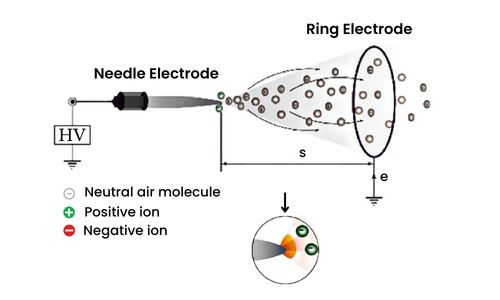Introduction
- Drying is one of the most common process technologies for preserving heat-sensitive plant-based foods such as fruits and vegetables.
- One such innovative drying technology is electro hydrodynamic (EHD) drying. EHD drying has recently gained significant interest as an alternative to standard convective drying. It is particularly suitable for drying heat-sensitive foods, such as fruits and vegetables[1].
- An advantage with respect to the drying process includes a shorter drying time when compared to hot-air and solar dryers at low or ambient temperatures (Precoppe et al., 2015; Bechoff et al., 2010; Pirnazari et al., 2014)[2].
- A further advantage is that the drying process is reported to have a lower energy consumption, so lower carbon emissions (Esehaghbeygi et al., 2014; Taghian Dinani et al., 2014a; Yang & Ding, 2016).
- Other reported advantages regarding product quality include better retention of nutritional content, flavor, and color, as well as lower shrinkage and higher rehydration capacity (Bajgai et al., 2006; Defraeye & Martynenko, 2018; Elmizadeh et al., 2017; Esehaghbeygi et al., 2014; Ni et al., 2019; Pirnazari et al., 2014)[3].
Electro Hydrodynamic Drying
- Electro hydrodynamics – Use of air ions in a strong electric field to Increase heat and mass transfer [4].
- Electro Hydrodynamic Drying – Non thermal processing technology
- EHD drying – Uses the synergistic effect of high voltage and corona wind velocity

Mechanism Of EHD Drying
1.Impingement of electric wind on food material[4].
2.Generation impact
3.Turbulence of water (greater just below the emitter electrode)
4.Water Molecules acquire sufficient energy
5.Phase changing of water from liquid to vapor
6.Generation Of concentration gradient between the concentric layers
7.Diffusion of water from outer layers to inner layers
8.Drying of entire food material.
| S.No | Food | Findings from EHD drying |
|---|---|---|
| 1 | Potato slabs | Rapid drying rate |
| 2 | Rice | No effect on germination characteristics |
| 3 | Shrimp | Less shrinkage Better rehydration Better color Softer body |
| 4 | Banana slices | Less shrinkage Better rehydration Better color |
Conclusion
- Electrohydrodynamic drying is a novel technology with higher drying rates as compared to conventional techniques.
- It is an energy efficient technique with reduced power consumption.
- It leads to increase quality retention and lesser quality deterioration of foods.
- The lower energy consumption leads to reduce cost of drying. However, an economic analysis, which has not been performed yet is essential in order to know detailed cost involved.
- Thus, electro hydrdynamic drying proves to be an ideal drying technology with great potential of applications in the food industry.





